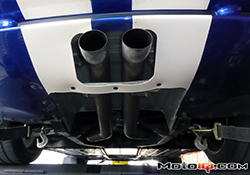
Prior to the test, Project Viper GTS was stock other than the addition of high performance spark plug wires, larger wheels & tires, as well as a muffler delete exhaust system
|
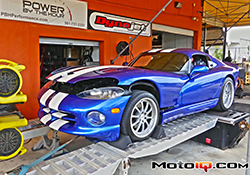
In minutes MotoIQ.com swapped out the factory air filters for dual K&N replacement air filters, number 33-2085, and demonstrated a significant increase in both horsepower and torque
|
Love it or hate it, the Dodge Viper has left its mark on the pages of supercar history. The concept for the Dodge Viper was conceived after Chrysler president Bob Lutz suggest that Dodge should build a modern take on the legendary Shelby Cobra. Keeping in line with the Shelby Cobra’s racing heritage, the first Dodge Viper was void of anything unnecessary in order to keep the car’s weight as low as possible. The 1992 Dodge Viper RT/10 lacked exterior door handles, side windows and even a roof. The center piece of the Dodge Viper was, and continues to be, it’s massive V10 engine. The Lamborghini Company, then owned by the Chrysler Corporation, designed the V10 for the Dodge Viper by recasting a block and heads based off a Chrysler V8 engine in an aluminum alloy. Since its inception the Dodge Viper’s V10 engine has grown both in displacement and power output.
MotoIQ.com, a technical automotive performance website modeled after the now defunct Sport Compact Car magazine, is currently working on a multi-part 1997 Dodge Viper GTS project aimed at showing how a used Viper has finally become a realistic option as a track day car for the enthusiast who actually works for a living. Part 4 of MotoIQ.com’s Project Viper GTS was particularly of interest to K&N as it successfully displayed the superior airflow and superior performance built into every K&N replacement air filter. In less than 20 minutes MotoIQ.com was able to swap out the two restrictive disposable air filters for dual K&N replacement air filters 33-2085 and demonstrate on a dynamometer a significant increase in horsepower and torque at the wheels.
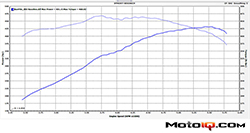
The Power by the Hour Performance crew established a baseline power reading for the 1997 Dodge Viper GTS using a Dynojet 224xLC dynamometer
|
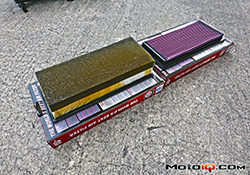
Dodge equips the Viper with restrictive air filters made of paper pleats topped with foam and next to the factory filter; the Performance K&N Filter visually looks like it’ll make horsepower
|
For this test MotoIQ.com began with a pristine 1997 Dodge Viper GTS with less than 8,000 miles on the odometer. Their Project Viper GTS car is stock other than the addition of high performance spark plug wires, larger 18x10 and 19x13 Forgeline ZX3P wheels with Michelin Pilot Sport PS2 “C1” 275/35-18 and 345/30-19 tires, as well as a rear muffler delete exhaust system. MotoIQ.com relied on Power by the Hour Performance in Boyton Beach, Florida for their dyno testing. After strapping the 1997 Dodge Viper GTS to the Dynojet 224xLC dynamometer, the Power by the Hour Performance crew established a baseline power reading for the car. This particular 1997 Dodge Viper GTS produced 431.15 horsepower and 468.02 lb-ft of torque at the rear wheels. Billy Johnson of MotoIQ.com was quick to admit that this reading is higher than other second generation Viper’s that they’ve tested; with most 2nd gen Vipers coming in around 415-425 rear wheel horsepower. From the factory the 1997 Dodge Viper was rated at 450 horsepower at the crank which has led the MotoIQ.com crew to believe that the second gen Viper was under-rated by Dodge.
After completing the baseline dyno testing, MotoIQ.com wasted no time swapping the Project Viper GTS stock air filters out in favor of K&N replacement air filters 33-2085. Most cars would take less than 5 minutes to swap out the disposable air filter for a K&N performance air filter upgrade. However, the Viper air box is fed by a hood-mounted cold air inlet and requires the air box to be removed from the car in order to change out the dual air filters. Dodge equips the brutish Viper with a restrictive air filter made of tightly packed paper pleats topped with closed-cell foam. “Next to the factory filter, the High Performance K&N Filter visually looks like it will improve air flow not only from being half as thick, but also from its freer flowing cotton gauze filtration media which is washable, reusable, and built to last for the life of the car,” wrote Billy Johnson for MotoIQ.com.
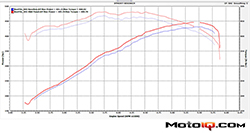
Billy Johnson and the Power by the Hour Performance crew were blown away after seeing the Project Viper GTS horsepower jump up 14.55 hp and 12.76lb-ft of torque at the rear wheels
|
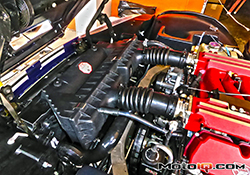
The crew quickly swapped out the stock Dodge Viper air filters within minutes of baseline dyno testing to ensure that temperature and humidity were as consistent as possible
|
Eager to see how much power installation of K&N air filters 33-2085 would free up in the 1997 Dodge Viper GTS the crew quickly swapped out the stock filters within 20 minutes of the baseline dyno testing. This ensured that temperature and humidity conditions were as consistent as possible according to the dynamometer, they were.
Billy Johnson from MotoIQ.com and the Power by the Hour Performance crew were blown away after seeing the Project Viper GTS horsepower jump up 14.55 hp and 12.76 lb-ft of torque at the rear wheels from nothing more than replacing the factory air filters with performance filters from K&N. After installing the dual K&N air filters, number 33-2085, the 1997 Dodge Viper GTS was making a total of 445.70 whp and 480.78 lb-ft torque. Torque gains were consistently in the double-digits from as low as 2,500rpm all the way to redline with a maximum increase of 17.39 whp at 5,362rpm. Billy Johnson wrote “We knew the factory air filters were restrictive but we did not expect gains this substantial from a simple 20-minute swap that costs $49.99 (each) on K&N’s website. This is one of the best horsepower per dollar modifications of any car that we’ve seen, and completely smashes the general rule of thumb of spending $100 per horsepower increase.”
While the huge horsepower and torque increases seen by replacing the air filters in a 1997 Dodge Viper GTS aren’t typical of every K&N replacement air filter, the same high-flow technology found in Dodge Viper air filter 33-2085 can be installed in in a matter of minutes on your car, truck, SUV, motorcycle, or ATV. K&N replacement air filters are designed and manufactured in the United States. K&N replacement air filters undergo multiple durability and performance tests that allow K&N the confidence to back them with a 10-year/million mile limited warranty. Additionally, K&N warrants that using its products will not result in a vehicle warranty denial. K&N will go so far as to step-in and resolve the issue, so you won't have to. Use the K&N search by vehicle tool to find a K&N air filter, or other performance upgrades, for your vehicle. To find an authorized K&N dealer use the K&N dealer search to find a dealer in your part of the world.
|














